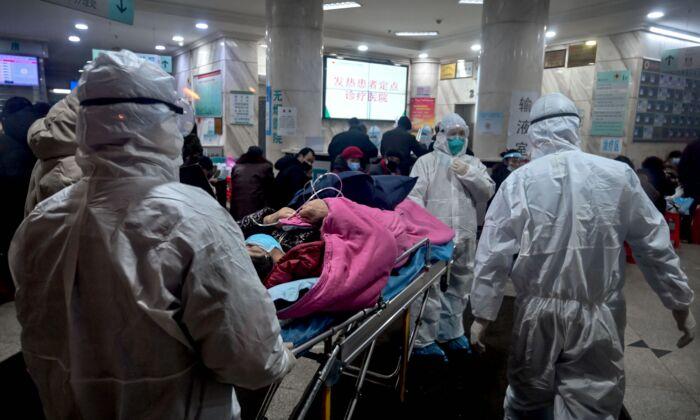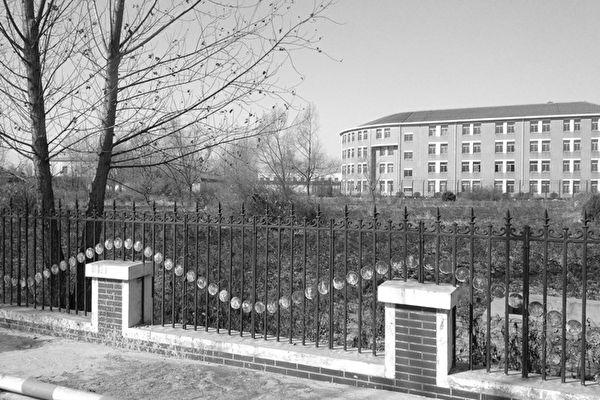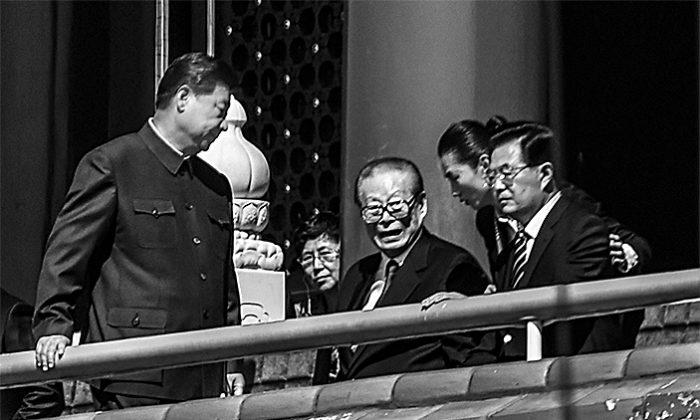Two different reports from Chinese state media on Feb. 3 made contradictory statements on the supply of diagnostic kits for the novel coronavirus.
One of the reports wrote, “At State Council’s press conference on Feb, 3, Tian Yulong, chief engineer of the Ministry of Industry and Information Technology, announced that by Feb. 1, the daily output of the diagnosis kits had reached 773,000, which is 40 times the number of suspected patients. Therefore, China’s medical facilities now have a sufficient supply of diagnosis kits.”
The other report, however, quoted a medical expert as saying that there is a shortage of diagnosis kits in Wuhan City, the epicenter of the coronavirus outbreak.
“Li Lanjuan, an academician of the Chinese Academy of Engineering and one of the medical experts at the National Health Commission, led a team to Wuhan to engage in the rescue work,” the report said, “In an interview with China Central TV (CCTV) on Feb. 3, Li said that there is currently a shortage of diagnosis kits in Wuhan. Therefore, not everyone [who exhibits symptoms of the novel coronavirus] can receive the diagnostic test.”
These two contradictory statements indicate that the number of “suspected coronavirus patients” is far higher than the official figures.
Also, the key issue is that many suspected patients are intentionally turned away by hospitals. Those who have not been confirmed will not be given a hospital bed, and they will not be counted into the official figures. If they die undiagnosed, they will not be counted in the death toll or fatality rate, either.
Indeed, many patients died before they had a chance to be diagnosed. Former Mayor of Huangshi City Yang Xiaobo is one of these patients. He is said to have “died from severe pneumonia.” Yang is a retired high-ranking official. If the doctors didn’t care to confirm Yang’s illness, then ordinary citizens would have much less chance to prove their illness by testing.
A Wuhan netizen disclosed online that one of his relatives was diagnosed with the disease at a hospital and died two days later at home. He checked the official data of death cases from the coronavirus and found that his relative’s name was not on the list. That means, even if an individual is a confirmed patient, if he passes away at home and not in a hospital, he will not be included in the official figure.
The National Health Commission on Feb. 2 publicized guidelines on disposing the corpses of patients infected with the coronavirus, which explicitly states that the remains should be cremated in a nearby facility and forbidden to be transported to other areas. Body burial or other methods for preserving the body are also prohibited. During the process, the corpse should be sealed in a body bag, family and relatives are not allowed to view the corpse.
These guidelines sparked concerns among Chinese netizens. They raised questions such as, “What if the patient has not died?” “I’m afraid that those severely ill patients did not get any treatment. It’s possible that they were waiting to die inside the isolated hospital ward.”
Many Chinese people demand the Wuhan government to publicize the number of cremated patients in January.
Wuhan’s government officials certainly will not disclose this figure, as they have been hiding the true scale of the outbreak from the very beginning.
Before China’s stock trading resumed on Feb. 3, there was a need to manipulate data to stabilize the stock market. Figures released by China’s National Health Commission showed a significant turning point—by Feb. 1, the daily number of newly diagnosed cases of the novel coronavirus dropped in two consecutive days. Also, the cumulative number of patients who had recovered was higher than the number of cumulative deaths.
China’s Ministry of Foreign Affairs also resumed work on the same day when the Chinese stock market resumed trading. Its spokeswoman, Hua Chunying, stated that China notified the United States of the coronavirus outbreak and China’s preventative actions 30 times since Jan. 3; still the United States, in return, took the lead to evacuate its citizens from Wuhan. She criticized the United States for not showing “pure kindness” towards China.
Why didn’t Hua criticize the Chinese communist regime for covering up the outbreak, wreaking havoc on the Chinese people, and causing the virus to spread across the globe? Why didn’t she express gratitude to the U.S. disinfectant manufacturer who asked employees to work overtime and doubled its factories from three to six to help China control the virus?
In her absurd statement to blame the United States, Hua nonetheless inadvertently revealed that the Chinese regime was fully aware at the early stage that the “coronavirus outbreak was very severe.”
The Chinese Communist Party always places its power before the lives of the Chinese people. Chinese civilians are bombarded with lies and cover-ups. All official figures from China—the number of confirmed cases, fatality rate, recovery rate—are distorted.
Countless people have been infected or have died due to the novel coronavirus, but are not counted in official figures. The numbers released by the regime are just a tiny fraction of the real figures in Wuhan.





